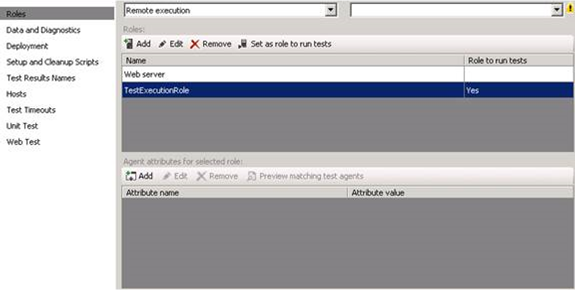How to set up ASP.NET profiler data diagnostic in load testing
Deepak Mittal , Support Escalation Engineer, has written this amazing post on how to set role for ASP.NET profiler in load test with Visual studio.
People often gets confused with the article below in setting up ASP.NET profiler data diagnostic in load testing.
msdn.microsoft.com/en-us/library/dd504817.aspx
Here is how you can enable it:
- First thing is install test agent on the web server from where you want to capture ASP.NET profiling.
2. In .testsetting file in role, you have to add two roles, one as "web server" and another as TestExecutionRole (it is just a name, you can give any name).
3. Web server role is for your ASP.NET server, and TestExecutionrole is for all other agents where your test execution will happen.
4. Now for TestExecutionRole, add attribute with value same as TestExecutionRole.
5. Similarly for web server role, add attribute with same value as "webserver".
6. Now go to test in menu -> Manage Test controllers.
7. In the dialog box, it will show you all the agents registered with the controller.
8. For each of the agent, click properties and assign the attribute name and value according to the role they play.
So for test agent on ASP.NET server, give the attribute name and value as webserver.
And for all the test agents, in properties, give the attribute name and value as TestExecutionRole
9. In data and diagnostics tab in testsettings file, you will see both the roles "web server" and "TestExecutionRole"
10. For "web server", enable ASP.NET profiler.
- Now, You are all set and ready to capture ASP.NET profiler.
- Content written by: Deepak Mittal, Support Escalation Engineer
- Content reviewed by: Teodora Stanev, Senior Escalation Engineer


